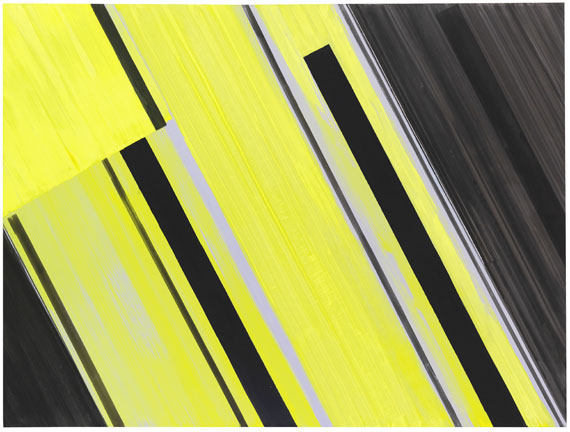Dictionary


Concrete art
The term "Concrete art" was introduced in 1924 by the Dutch painter and art theorist Theo van Doesburg. In 1930 he set down the tenets of this movement in a manifesto issued when the "Art concret" group was founded. The term is intended to emphasise that Concrete art is not to be viewed as "abstract" since it does not extrapolate anything present in material reality but rather originates the immediate handling of the concrete pictorial devices line, color, surface, volume and space. A distinction is drawn between abstract and non-representational painting and sculpture. Concrete art renders the spiritual and intellectual in material terms yet possesses no symbolic meaning. "Painting is a means for rendering thoughts in visual terms," was Doesburg's explanation. In 1947 Max Bill wrote: "The aim of Concrete art is to develop objects for intellectual use just as man creates objects for material use [...] Concrete art is in the last analysis the pure expression of harmonious proportion and law. It orders systems and breathes life into those arrangements by artistic means." Unlike Constructivism, Concrete art concentrates on the interplay of form and color, being interested in examining color and scientific thinking.
The term "Concrete art" was introduced in 1924 by the Dutch painter and art theorist Theo van Doesburg. In 1930 he set down the tenets of this movement in a manifesto issued when the "Art concret" group was founded. The term is intended to emphasise that Concrete art is not to be viewed as "abstract" since it does not extrapolate anything present in material reality but rather originates the immediate handling of the concrete pictorial devices line, color, surface, volume and space. A distinction is drawn between abstract and non-representational painting and sculpture. Concrete art renders the spiritual and intellectual in material terms yet possesses no symbolic meaning. "Painting is a means for rendering thoughts in visual terms," was Doesburg's explanation. In 1947 Max Bill wrote: "The aim of Concrete art is to develop objects for intellectual use just as man creates objects for material use [...] Concrete art is in the last analysis the pure expression of harmonious proportion and law. It orders systems and breathes life into those arrangements by artistic means." Unlike Constructivism, Concrete art concentrates on the interplay of form and color, being interested in examining color and scientific thinking.
Offers
Headquarters
Joseph-Wild-Str. 18
81829 Munich
Phone: +49 89 55 244-0
Fax: +49 89 55 244-177
info@kettererkunst.de
Louisa von Saucken / Undine Schleifer
Holstenwall 5
20355 Hamburg
Phone: +49 40 37 49 61-0
Fax: +49 40 37 49 61-66
infohamburg@kettererkunst.de
Dr. Simone Wiechers / Nane Schlage
Fasanenstr. 70
10719 Berlin
Phone: +49 30 88 67 53-63
Fax: +49 30 88 67 56-43
infoberlin@kettererkunst.de
Cordula Lichtenberg
Gertrudenstraße 24-28
50667 Cologne
Phone: +49 221 510 908-15
infokoeln@kettererkunst.de
Hessen
Rhineland-Palatinate
Miriam Heß
Phone: +49 62 21 58 80-038
Fax: +49 62 21 58 80-595
infoheidelberg@kettererkunst.de
We will inform you in time.




